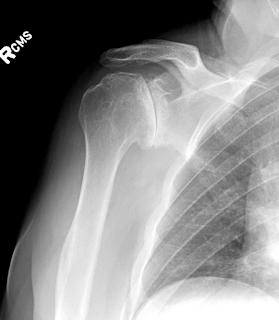Posterior subluxation of the humeral head in primary osteoarthritis of the shoulder is common. It is usually associated with a B2 Walch glenoid deformity. When there is associated flattening of the humeral head, as seen in this case below, usually there is significant limitation is motion and stiffness.
When planning the total shoulder anatomic replacement, it is important not to proceed with an aggressive humeral head cut. Significant decrease of the volume of the head due to an aggressive humeral head cut will help with glenoid exposure BUT it will make the posterior instability worse. While some surgeons use posterior augmented glenoid components, I prefer to address the instability with soft tissue balancing, conservative humeral head cut, eccentric humeral head - dialing eccentricity anteriorly - and possible closure of the rotator cuff interval at the end of the surgery.
Below you will find xrays of a case that illustrates a clinical situation where such approach had to be used.























